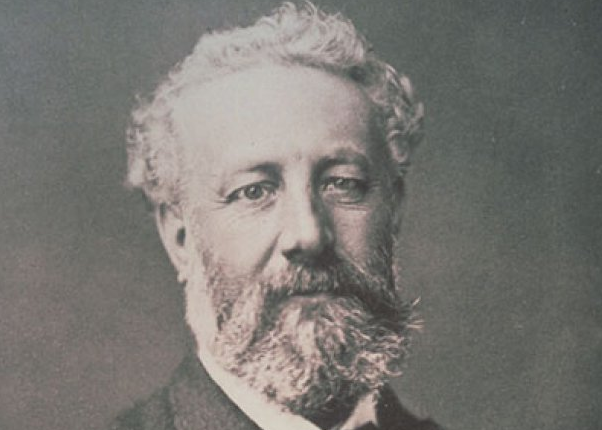
In 1863, Jules Verne’s first book, “Five Weeks in A Balloon” was published by Pierre-Jules Hetzel. Subtitled “Journeys and Discoveries in Africa by Three Englishmen”, it was a fantasy tale of the exploration of Africa using a scientific novelty – a hot air balloon. The novel went into specific detail about the balloon and the apparatus used to power it – a powerful battery, complete with detailed calculations. There are numerous plot points which hinge on the technology itself – the actions (or, in some cases, inaction) of the balloon. Although the science was questionable, Verne’s book was the beginning of a new genre ‘science-fiction’.
Together with Hetzel, Verne went on to publish dozens of books of ‘science-fiction‘, at the rate of approximately two per year, putting paid to his father’s concerns that Verne had chosen to write books, instead of completing the study of law.
Verne’s classic science-fiction included Journey to the Center of the Earth, From the Earth to the Moon, and Twenty Thousand Leagues Under the Sea. He not only started a new genre, but anticipated inventions ranging from helicopters and submarines, to space rockets and projectors.
In 1889 a previously unpublished Verne novel Paris in the Twentieth Century was discovered. Hetzel had suggested that the book’s dark view would harm Verne’s popularity, and proposed that he wait a few decades to publish it. Verne had put the manuscript in a safe – where it was discovered by his great-grandson. It was published in 1994.
Paris in the Twentieth Century describes a dystopian future, set in 1960, and centers on a young man who (not unlike Verne himself, and at the same age – sixteen), eschews a career in law and the inheritance of his father’s law practice, and sets out to become a writer. But the hero in this dystopian future, Michel Dufrenoy, a graduate in the classics, emerges into a world where the only valuable writing deals with technology – all arts are funded by the government. Dufrenoy, a poet, ultimately starves to death.
This rather remarkable ‘lost novel’ includes predictions or descriptions of high speed trains, cars powered by gas, electrocution of criminals, space rockets, projectors, air-conditioning, televsion, a geometric modern centre-piece for the Louvre, and a world-wide telgraphic communications network – a Victorian vision of the Internet

